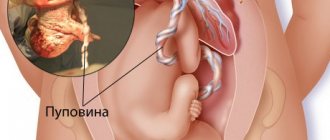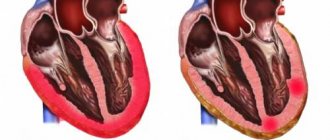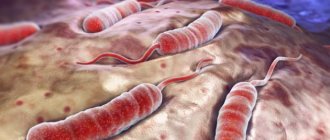Distribution area: Australia, South Asia (India), South, Central and North America, Europe, North and South Africa
Typhus fever is understood as an acute anthroponotic disease, which is characterized by a cyclic course and damage to the patient’s predominantly nervous and cardiovascular systems.
Typhus is an infectious disease, so the likelihood of its spread among the population is quite high. A characteristic sign of the disease are distinctive manifestations on the patient’s body caused by changes in blood vessels by intracellular parasites. In case of progression of typhus, the development of diseases such as meningitis, myocarditis or thrombosis cannot be excluded.
There are two types of rash type - endemic and epidemic. They differ from each other in the following characteristics.
What is typhus?
Typhus is a disease caused by infection with one or more rickettsial bacteria. Fleas, ticks (chiggers), and lice transmit the disease when they bite a person. Fleas, ticks, and lice are species of invertebrate animals known as arthropods. When arthropods carrying rickettsial bacteria bite someone, they transmit the bacteria that causes typhus. Scratching the bite further opens up the bite site and gives bacteria more access to the bloodstream. Once in the bloodstream, bacteria continue to multiply and grow.
There are three different types of typhus:
- epidemic (louse-borne) typhus (also called rat typhus, flea fever, American typhus, or prison fever);
- endemic typhus (also known as classical, European, rat (mouse) or louse typhus);
- bush typhus (tsutsugamushi).
The type of typhus you get depends on what is infecting you. Arthropods, as a rule, are carriers of a strain of typhus unique to their species.
Outbreaks usually occur only in developing countries or in poor areas with poor sanitation and close human contact. In Russia, typhus is generally not a problem, but you can become infected while traveling abroad.
Without treatment, typhus can lead to serious complications and death. It is important to see a doctor if you think you may have typhus.
Epidemiology
The disease develops as a result of direct human contact with virus carriers. The pathogen is transmitted transmissibly through blood-sucking insects. There are epidemic and endemic typhus. The first is spread by body or head lice, the second by ixodid ticks.
After sucking on the blood of a sick person, the insect becomes infected and remains extremely dangerous for 7 days. Rickettsiae enter the parasite's intestines with the blood, multiply and accumulate in the epithelial cells of the intestine. A louse or tick, having landed on the body and attached itself, begins to defecate. During bowel movements, a lot of mucus is released, which causes itching. A healthy person scratches the bite site, rubbing feces into the resulting abrasions. This is the main route of spread of rickettsia. After 2-3 weeks, the insect’s intestines become clogged and self-liquidation occurs.
Infection is possible aerogenically, when healthy individuals inhale dried feces of lice or mites along with dust. Rickettsia settle on the epithelium of the respiratory tract and begin to actively multiply. The contact route is the entry of rickettsia into the conjunctiva. There are known cases of infection through blood transfusion from donors during blood transfusions.
Susceptibility to typhus is high and universal. The disease affects people of any gender, age, origin. The risk group includes workers in transport, baths, laundries, disinfectors, and doctors. The main factor predisposing to the development of the disease is a violation of hygienic living conditions. This usually happens during wars, social upheavals and emergencies. Pediculosis, migration processes, and the lack of centralized water supply contribute to the spread of infection.
The disease often recurs. When immunity decreases, rickettsiae that persist after incomplete cure are activated. Typhus, which developed again, was called “Brill's disease.”
Causes of typhus
Typhoid is not spread from person to person like the cold or flu. There are three different types of typhus, each caused by different types of bacteria and transmitted by arthropods.
Endemic typhus
This type is caused by Rickettsia prowazekii and is carried by lice and possibly ticks. This type of disease occurs throughout the world, including in Russia, but is usually found in areas with large populations and poor sanitation, where conditions are conducive to lice infestation.
Endemic typhus
Alternatively known as murine typhus, this type is caused by Rickettsia typhi and is carried by fleas of rats or cats. Endemic typhus occurs throughout the world. It occurs among people who have close contact with rodents.
Scrub typhus
This type is caused by Orientia tsutsugamushi and is carried by ticks in the larval stage when they are still chiggers. This type of typhus is more common in Asia, Australia, Papua New Guinea and the Pacific Islands. It is also called tsutsugamushi disease.
Mochutkovsky's experiment
The experiment made such a strong impression on the infectious disease specialist that in 1876 Mochutkovsky performed the same one on himself, but with typhus. He almost died, developed myocarditis, migraines and memory loss. And yet the result was achieved: the typhus clinic is obvious, but there are no spirochetes in the blood. Therefore, real typhus - the menace of any army - is caused by something else, and this something can be carried by insects. Which ones? In a historical letter to the editor of the Chronicle of Medicine dated February 2 (14, new style), Minkh suggested that researchers “collect a small number of known insects (bugs, fleas...), which are easy to find...”
The hypothesis caused distrust: since both work in a hospital, they could have become infected from patients. Then the biologist Ilya Mechnikov, who did not communicate with patients by nature of his work, inoculated himself with relapsing fever and suffered from it (biographers see in this feat a disguised suicide attempt), proving Minha right: blood is contagious.
Symptoms of typhus
Symptoms vary slightly depending on the type of typhus, but there are symptoms associated with all three types of the disease, such as:
- headache;
- fever;
- chills;
- skin rash.
Symptoms of epidemic typhus usually appear suddenly and include:
- severe headache;
- high temperature (above 39);
- a rash that appears on the back or chest and spreads throughout the body;
- confusion;
- stupor and feeling of loss of connection with reality;
- low blood pressure (hypotension);
- eye sensitivity to bright light (photophobia);
- severe muscle pain (myalgia).
Symptoms of endemic typhus last 10 to 12 days and are very similar to those of epidemic typhus, but are usually less severe. These include:
- dry cough;
- nausea and vomiting;
- diarrhea.
Symptoms seen in people with scrub typhus include:
- swollen lymph nodes;
- fatigue;
- red lesions or wounds on the skin at the site of the bite;
- cough;
- skin rash.
The incubation period of the disease averages from 5 to 14 days. This means that symptoms usually do not appear until 5-14 days after the bite. Travelers who become ill with typhus while traveling abroad may not experience symptoms until they return home. This is why it is important to tell your doctor about any recent travel if you have any of the symptoms listed above.
Symptoms
Identifying the symptoms of typhus at an early stage helps to completely get rid of the pathogen if appropriate treatment measures are taken. Like many diseases, this disease is best treated at an early stage, and in order to identify it, you need to know the main symptoms of the disease.
Typhus is characterized by three forms of the disease, which are called: initial, peak and complications. The incubation period lasts from 6 to 25 days and is characterized by a cyclical course of the disease.
Symptoms of the initial stage
The initial form is characterized by an increase in a person’s body temperature to 39 and, in rare cases, 40 degrees. At the same time, fatigue, headaches and muscle aches slowly begin to appear. A person with the first symptoms of the disease is characterized by a prodromal manifestation. The duration of sleep decreases, insomnia occurs, and unintentional heaviness appears in the head. Everything leads to general malaise of the body.
Symptoms of typhus in children
After 3-4 days, febrile symptoms appear throughout the body. But already on the fifth day the temperature drops to 37 degrees. At the same time, all other symptoms remain and even worsen. The fever becomes constant, intoxication increases and general exhaustion of the body increases. Along with headaches, dizziness and hyperesthesia (disorders of the sensory organs) occur. It is common for a person to experience vomiting, a coated tongue and dryness. A disturbance of consciousness occurs.
Important symptoms of the initial stage are:
- Redness of the facial skin;
- Reduced blood pressure;
- The occurrence of tachycardia;
- The appearance of hemorrhages on the body after pinching it.
A medical examination reveals hyperemia and swelling on the face. If you feel a person’s skin, it has a characteristic sign of dryness. The second day of localization of typhus is characterized by the appearance of hemorrhages in the folds of the conjunctiva and endothelial symptoms. From the third day, hemorrhage occurs in the transitional folds of the conjunctiva. From the fifth day, hepatosplenomegaly and increased vascular fragility appear. All these symptoms determine the initial form of the disease, which gradually develops into the peak stage.
Signs of heat form
Symptoms of the height form of typhus
Symptoms of the high stage are characterized by the appearance of a rash all over the body. Often, the first signs of a rash appear already on the 6th day, and closer to the tenth day they spread throughout the body. At the same time, headaches only intensify and recur more and more often. Fever becomes a common condition for a person with typhus.
The rash primarily appears on the extremities, and then along the torso. It looks like thick, bumpy pimples that cause itching all over the body even before they appear. The rash almost never appears on the face, feet or palms. In this case, the tongue takes on a brownish appearance, which indicates the progression of hepatomegaly.
Pain occurs in the lumbar area, which indicates the appearance of pathology in the renal vessels. A person experiences problems such as bloating, constipation and prolonged urination. Urination is characterized by pain, which is caused by atony of the bladder. In this case, it is typical to release urine one drop at a time.
Often the height of the disease causes swelling of the tongue, which leads to problems chewing food and speaking. Sometimes the form of fever is characterized by the appearance of such diseases:
- dysphagia;
- anisocoria;
- nystagmus;
- weakening of the pupils.
The most dangerous end of the high stage leads to the appearance of meningitis.
Meningitis
Signs of severe form
The severe form is caused by the appearance of typhoid status, characterized by:
- the occurrence of mental disorders;
- psychomotor agitation;
- talkativeness;
- violation of self-awareness;
- the appearance of memory gaps.
Severe symptoms last from 4 to 10 days.
On the part of the digestive system, enlargements of the liver and spleen are observed, which can be detected by ultrasound.
During sleep, hallucinations appear, leading to night awakenings. There is practically no sleep at this stage, which affects the nervous system. After the expiration of a two-week period, all of the above symptoms gradually disappear, except for the rash. The disease enters the convalescent stage.
The rash and weakness may continue for another week, after which they also gradually disappear.
Symptoms of Brill's disease
Symptoms of Brill's disease
Brill's disease is caused by almost identical symptoms to the main symptoms of typhus. This disease is a recurrent typhus syndrome and occurs due to the presence of the pathogen in the body for a long period. Manifestation occurs in the case of active reproduction of Provachek's rickettsia, which is caused by a decrease in immunity. The so-called passive pathogen of typhus, which can remain in the human body for a long time.
Symptoms of the disease almost always have the same severity, only they occur in a milder form. Body temperature does not rise above 38 degrees, and it is caused by frequent changes. The duration of febrile manifestations is halved, which means it lasts about a week.
The disease is characterized by an exceptionally mild form of the disease and there are no phases of peak and complications. Diagnosis is the same as for typhus disease. It was noticed that this disease manifested itself even after the 20-year period.
Diagnostics
If you think you have typhus, your doctor will ask you about your symptoms and medical history.
Diagnosis is difficult because symptoms are common to many other infectious diseases, including:
- dengue fever and malaria, infectious diseases spread by mosquitoes;
- brucellosis, an infectious disease caused by the bacterial species Brucella.
Diagnostic tests for typhus include:
- skin biopsy: a sample of skin with a rash is examined in the laboratory;
- Western blot: test to detect the presence of typhus;
- immunofluorescence test: uses a fluorescent dye to detect typhoid antigen in serum samples taken from the bloodstream;
- other blood tests: results may indicate infection.
Diagnostic measures
Diagnosis of typhus at the initial stage is difficult, since there is still no typical exanthema, and patients complain only of general signs of intoxication. Diagnosis is facilitated by epidemiological history, especially during outbreaks.
Laboratory diagnosis of the disease:
- General analysis of blood and urine - signs of bacterial inflammation and intoxication: an increase in the number of neutrophils, a decrease in eosinophils, lymphocytes, erythrocytes, platelets, an increase in ESR. The data obtained are nonspecific and uninformative.
- Analysis of cerebrospinal fluid - lymphocytic cytosis.
- BAC - hypoproteinemia, violation of the ratio of albumin and globulins.
- Serological reactions - staging of RNGA, RNIF, RSK in order to detect antibodies to rickettsia. These methods are easy to perform, relatively cheap, fairly specific and highly sensitive. A diagnostic titer is considered to be 1:160 or higher.
- Enzyme immunoassay - detection of immunoglobulins M and G, indicating the initial stage of acute infection or chronicity of the process.
Additionally, studies of individual organs are carried out using hardware methods - ECG, ultrasound, EEG, and lung radiography.
Treatment of typhus
Those sick with typhus are subject to mandatory hospitalization. Treatment of patients should be comprehensive - etiotropic, pathogenetic and symptomatic, subject to proper care.
Treatment aimed at eliminating the cause of the disease is carried out with the help of tetracycline antibacterial drugs Tetracycline drugs are prescribed at 0.3-0.4 g, and chloramphenicol - 0.5 g 4 times a day for adults (for children, medications are prescribed according to age). It has been proven that a single dose of 100 mg of doxycycline interrupted the course of typhus.
Patients for whom oral administration of drugs is difficult are given parenteral administration of the same drugs in the indicated doses and regimens. In severe and very severe cases of the disease, tetracyclines can be administered intramuscularly or intravenously at 250 mg 2 times a day.
When treated with antibiotics, the temperature normalizes after 1.5-2 days and therefore, usually from the 3rd day of normal temperature they are canceled, and only if secondary complications appear, treatment can be delayed for several days. The duration of treatment is usually 4-5 days.
Pathogenetic therapy , aimed at eliminating and suppressing the mechanisms of disease development, includes intravenous administration of detoxification solutions (5-10% glucose solutions or isotonic sodium chloride solution, 500-600 ml). Oxygen therapy is used (oxygen is administered through nasal catheters or a mask). In case of circulatory disorders, cardiac and vascular drugs are administered (camphor, cordiamine, norepinephrine, ephedrine, mesatone, as well as corglicon and strophanthin), which are prescribed according to indications. In case of severe agitation of patients and mental disorders, bromides, chloral hydrate, aminazine, barbiturates, seduxen and other tranquilizers are used. Rubbing with warm water (37-38.5°C) also has a calming effect.
Bed rest is indicated until 5-6 days of normal temperature, then patients are allowed to get up. Discharge should take place no earlier than 12-14 days of normal temperature.
Incidence (per 100,000 people)
| Men | Women | |||||||||||||
| Age, years | 0-1 | 1-3 | 3-14 | 14-25 | 25-40 | 40-60 | 60 + | 0-1 | 1-3 | 3-14 | 14-25 | 25-40 | 40-60 | 60 + |
| Number of sick people | 0.0001 | 0.0001 | 0.0001 | 0.0001 | 0.0001 | 0.0001 | 0.0001 | 0.0001 | 0.0001 | 0.0001 | 0.0001 | 0.0001 | 0.0001 | 0.0001 |
Complications
Rickettsial bacteria parasitize the vascular endothelium, which can cause various complications:
- thrombophlebitis;
- endarteritis;
- pulmonary embolism;
- cerebral hemorrhage;
- hypovolemia (represents a decrease in the volume of fluid in the blood);
- hepatitis;
- gastrointestinal bleeding;
- myocarditis.
The predominant localization of bacteria in the central nervous system leads to complications such as:
- psychosis;
- depersonalization;
- polyradiculoneuritis.
The addition of a secondary bacterial infection can cause the addition of:
- pneumonia;
- otitis;
- mumps;
- glomerulonephritis.
Forecasting and warning
The prognosis of the pathology is favorable. Timely and properly selected antibiotic therapy can easily cope with the infection. Deaths are associated with insufficient or delayed medical care.
Complications of typhus include:
- Toxic shock
- Persistent cardiovascular dysfunction
- Inflammation or myocardial infarction,
- TELA,
- Meningitis and meningoencephalitis,
- Secondary bacterial infection
- Glomerulonephritis,
- Thrombophlebitis,
- Endarteritis,
- Gangrene of the limbs,
- Psychosis,
- Polyradiculoneuritis,
- Collapse.
Prevention of infection consists of carrying out specific, emergency and non-specific measures.
Persons who have been in contact with sick people and live in disadvantaged regions are subject to
vaccination There are killed and attenuated live vaccines. Immunization of the population was actively carried out when the incidence of typhus was very high. Today, specific infection prevention has lost its importance. This is due to the persistent therapeutic effect of antibiotics and low incidence rates.- Emergency measures include the use of tetracycline antibacterial agents if there is a high probability of infection.
- Nonspecific measures to prevent the development of typhus: destruction of lice and ticks; early identification of patients and their isolation in an infectious disease ward; destruction, neutralization and disinfection of pathogenic biological agents; elimination of foci of rickettsiosis.
Prognosis for typhus
Early treatment with antibiotics is very effective, and relapses do not occur if the full course of antibiotics is taken. Delayed treatment and misdiagnosis can lead to more severe typhus illness.
Typhoid epidemics are more common in poor, unsanitary and crowded places. The people most at risk of dying are generally those who cannot afford prompt treatment. The overall death rate from untreated typhus depends on the type and other factors such as age and general health.
The highest rates are observed in older people and those who are malnourished. Children usually recover from typhus. People with underlying health conditions (such as diabetes, alcoholism, or chronic kidney disease) also have a higher risk of mortality. The mortality rate for epidemic typhus, which is untreated, can range from 10 to 60 percent, and the mortality rate for untreated scrub typhus can be as high as 30 percent.
Endemic/rat typhus is rarely fatal, even without treatment. Death occurs in no more than 4 percent of cases.
Prevention
During World War II, a vaccine was created to prevent epidemic typhus. However, the declining number of cases has halted vaccine production. The easiest way to prevent the disease is to avoid the pests that spread it.
Prevention suggestions include:
- maintaining adequate personal hygiene (helps protect against disease-carrying lice)
- rodent population control (rodents are known to carry arthropods)
- Avoid traveling to areas where typhus infection has occurred or to countries at high risk due to lack of sanitation
- chemoprophylaxis with doxycycline (used as a prophylactic only for high-risk individuals, such as those participating in humanitarian campaigns in areas of extreme poverty and little or no sanitation)
Use insect and tick repellent. Perform routine tick checks and wear protective clothing if traveling near areas where there have been outbreaks of typhus.
Typhoid vaccine
Since there were traders similar to bag smugglers in countries neighboring Russia, danger threatened all of post-war Europe. The League of Nations spared no expense on Weigl's laboratory. By 1920, the vaccine was ready and saved several million Poles during the Red Army invasion. On the eastern borders of Europe, not only the Reds were stopped, but also typhus.
The Red Army occupied Lviv only in 1939. The first secretary of the Ukrainian Central Committee, Nikita Khrushchev, came to Weigl and offered to move to Moscow. He promised an institute, a department and membership in the Academy of Sciences. Weigl managed to convince Khrushchev that he and his employees would be more useful in Lvov.
After 2 years, the Germans came to Lviv and invited Weigl to continue producing the vaccine, this time for the needs of the Wehrmacht. After much bargaining, the scientist agreed, but on condition of complete immunity for everyone he needed. Many volunteers were needed to feed the lice on themselves before the insects were infected with typhus and processed into a vaccine. Weigl forced the entire Lviv intelligentsia to feed lice.








